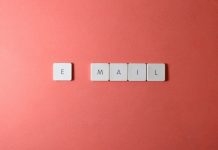You get new leads from marketing or it’s time to send an interesting marketing email. But how do you start the right conversation that will eventually close the deal?
After all, the average recipient receives almost 150 emails a day and deletes almost half of them. If you want to make an impact, your email needs to stand out. It’s definitely possible, and it’s worth the effort – the average return on email marketing is $38 for every $1 invested. This is a great financial opportunity.
Using good email marketing examples as inspiration, you can create messages that grab your readers’ attention and increase your chances of making a sale.
The Essentials of the Best Sales Email Drafting
Write an Interesting Subject Line
50% of recipients open emails by reading the subject line only.. Write a subject line to ask a question, present a data-based insight, or describe a potential customer pain point.
“The subject line is important because it’s the first thing people see when they open an email,” says the professional of a renowned company. “Keep in mind that your subject line is visible on every gadget. It helps to include the prospect’s name, a short question or idea about something specific to their needs.”
Use Appropriate Opening Lines
Your email subject line may have gotten you in the door, but now your opener should encourage recipients to keep reading.
Try starting with something personal, like “I love your blog…” or “I’m excited to hear about your company’s product launch…” You can also start by introducing a new person. If you can’t get a personal quote, mentioning an important number can get their attention.
Just be sure to skip the “Hi, my name is…” introduction, which is slow and unorganized for the reader.
Adjust the Length to Your Audience
The much-quoted Boomerang study concluded that “the best response rate for emails between 50 and 125 words is slightly more than 50 percent.” However, a recent study by Prospect.io found that sales emails of about 300 words have a higher response rate than sales emails of less than 100 words.
It depends a lot on your recipient – a random, busy email can be a great way to get your foot in the door. However, if you’re aiming to buy high B2B tickets (or writing to people you know and talk to), long-term, detailed emails can help build relationships.
Regardless of your target audience, make sure the body of your email is concise and digestible.
Avoid Talking About Yourself
Sales Email Recipients want to know what you can do for them, not how good you and your company are. Explore your contact’s website and social media pages to learn more about their needs and interests. That way, you can customize your marketing and sales emails.
Add Clear Calls to Action and Other Steps
Don’t let readers know what to do next. Do you want to show off? Want to discuss your product with a quick call? Give direction to the prospect and keep the conversation moving.
The professional explains, “You always want to end an email with a question or statement, not just a yes or no. Don’t ask, ‘Is this helpful?’ Try to turn it into an open-ended question. ‘What do you think about our conversation on Monday?’ and add a calendar invitation. Focus on calls to action that encourage potential customers to respond or take action.”
Send Sales Emails at the Right Time
The professional believes that when it comes to online marketing, timing is everything.
“Look for specific moments, such as when the company received funding, if it acquired another company, if there was a leadership change, if a new product was launched, or if the person sent an email with a promotion, ” he says.
Add Value Using a Follow-Up Email
You probably won’t get a response at first, and that’s okay. Resilience Pays: Ambition.com increased its cold sales email response rate from 1% to 12.6% by sending follow-up emails.
Even if you get a response, follow-up is important to continue the conversation. But remember, every marketing email should display the same level of personalization – nothing kills a connection faster than a one-size-fits-all message.
Instead, try to add value to every follow-up email you send, especially if you’re trying to get people’s attention.













